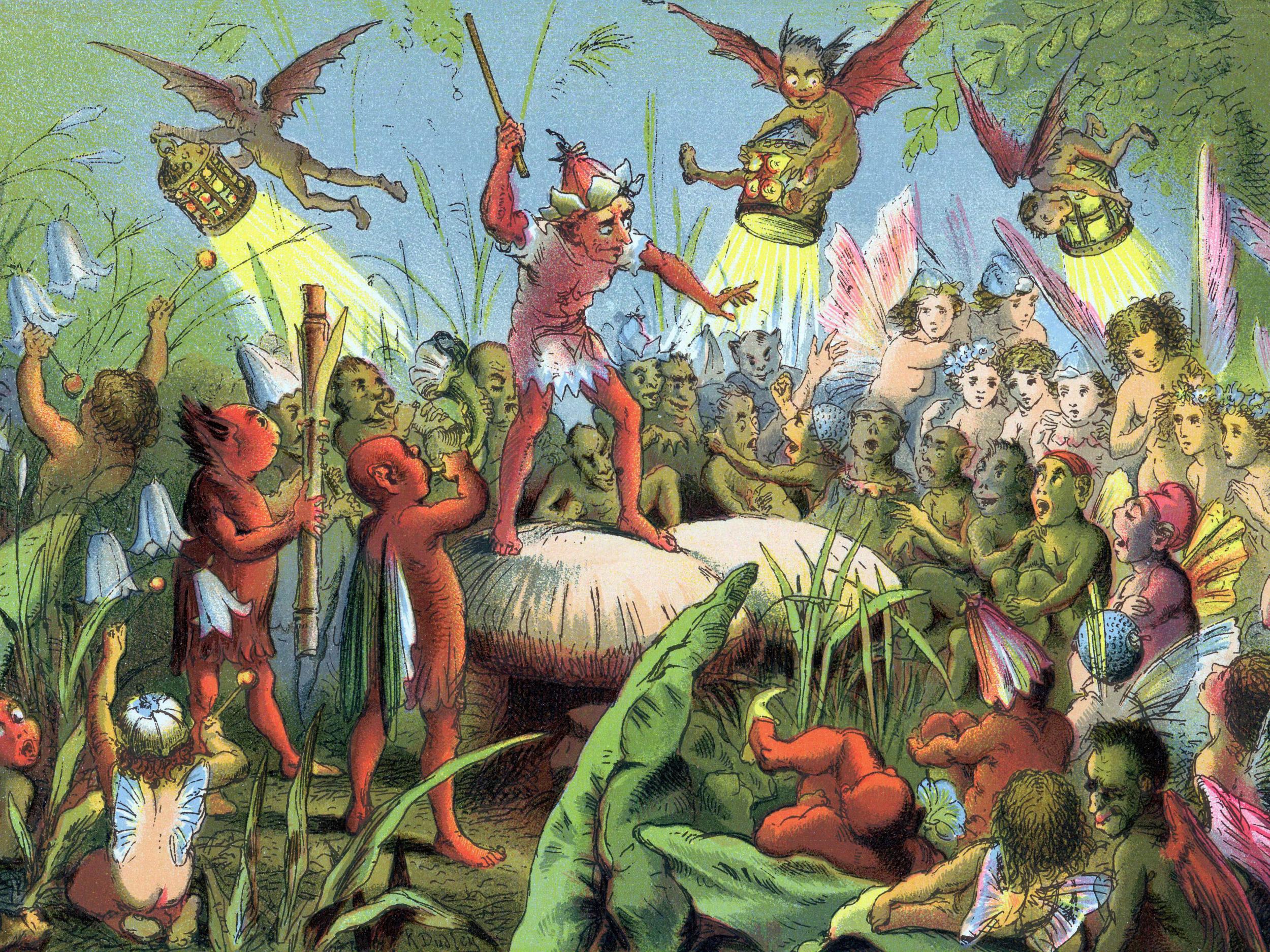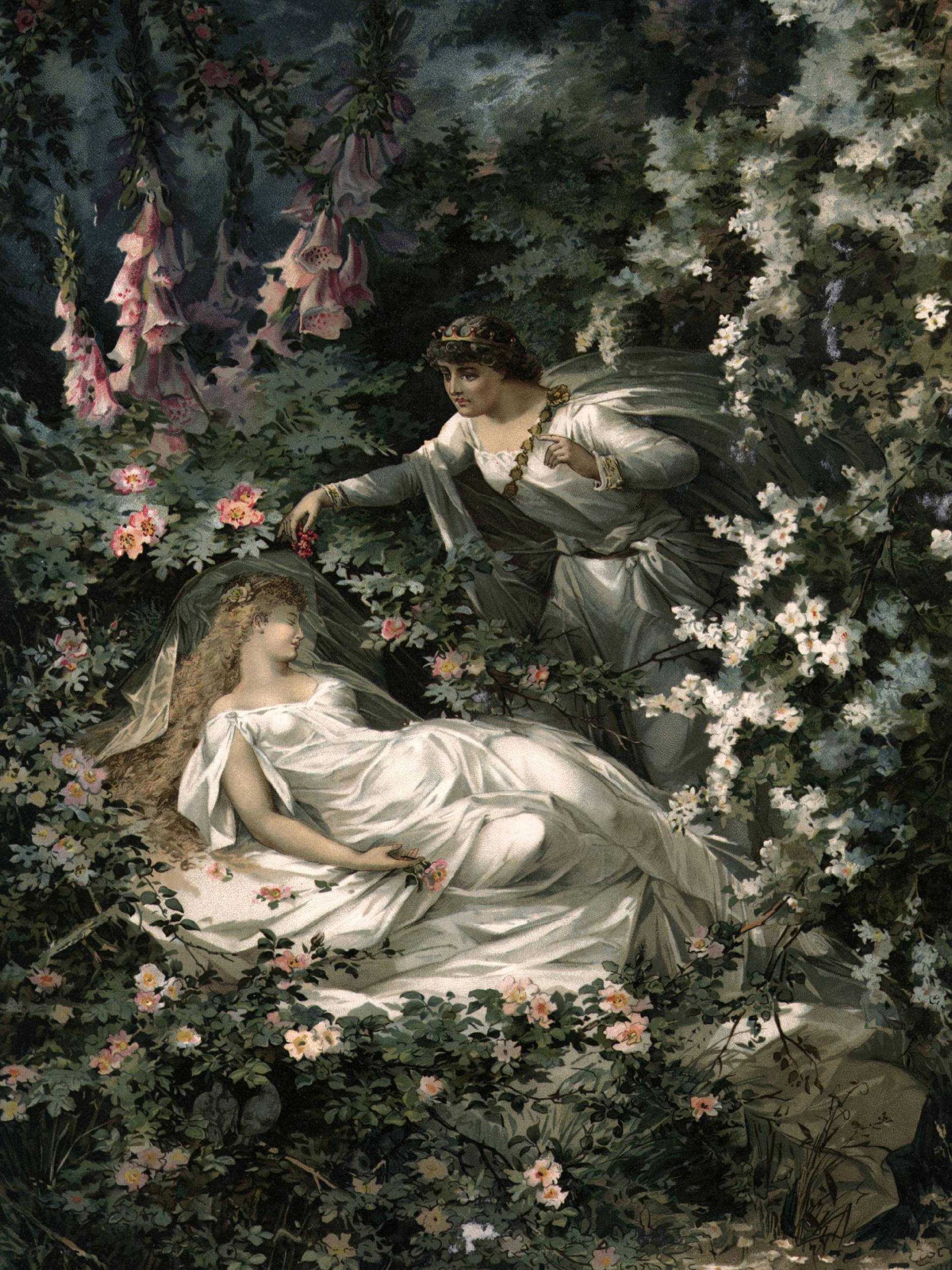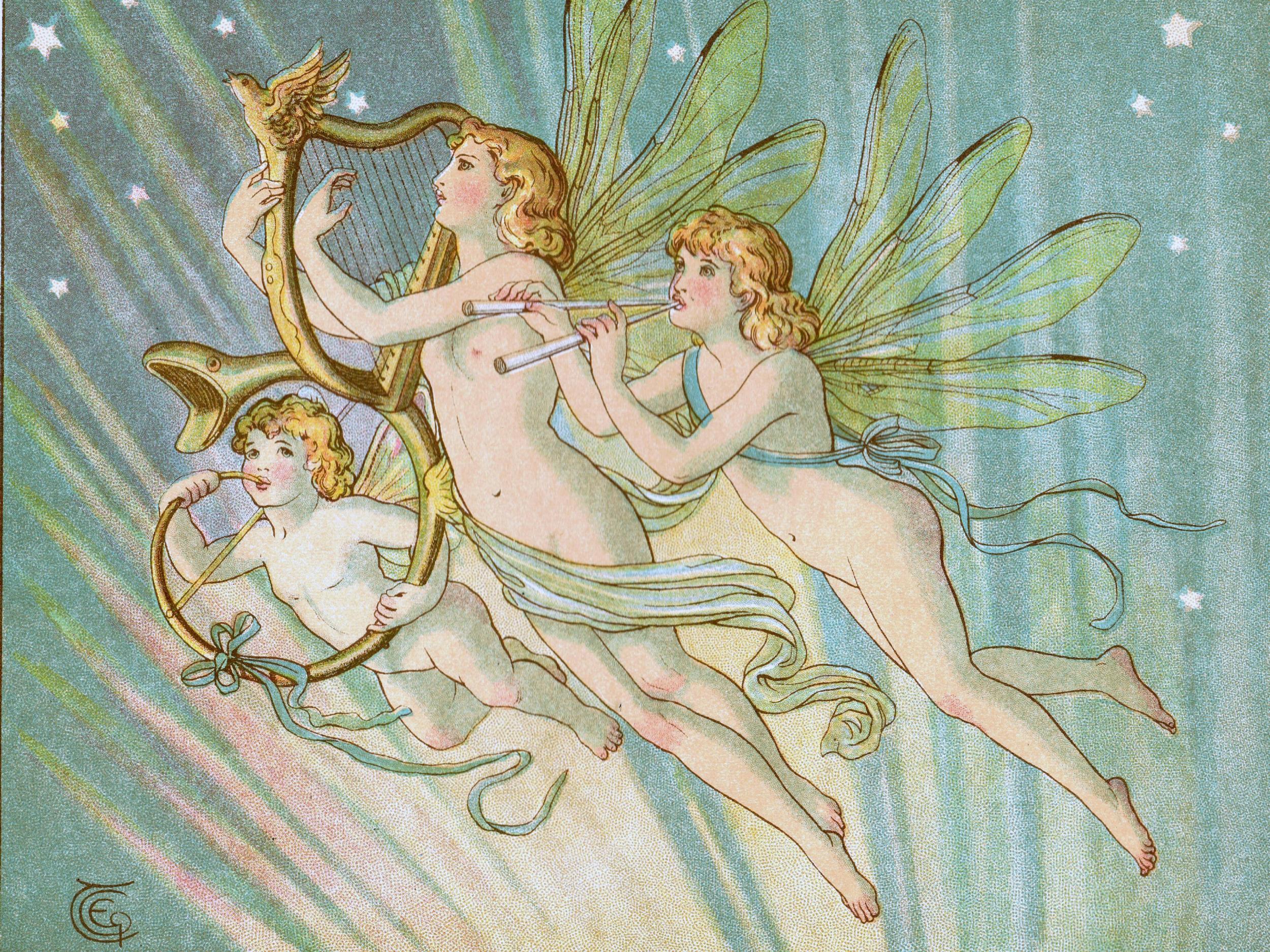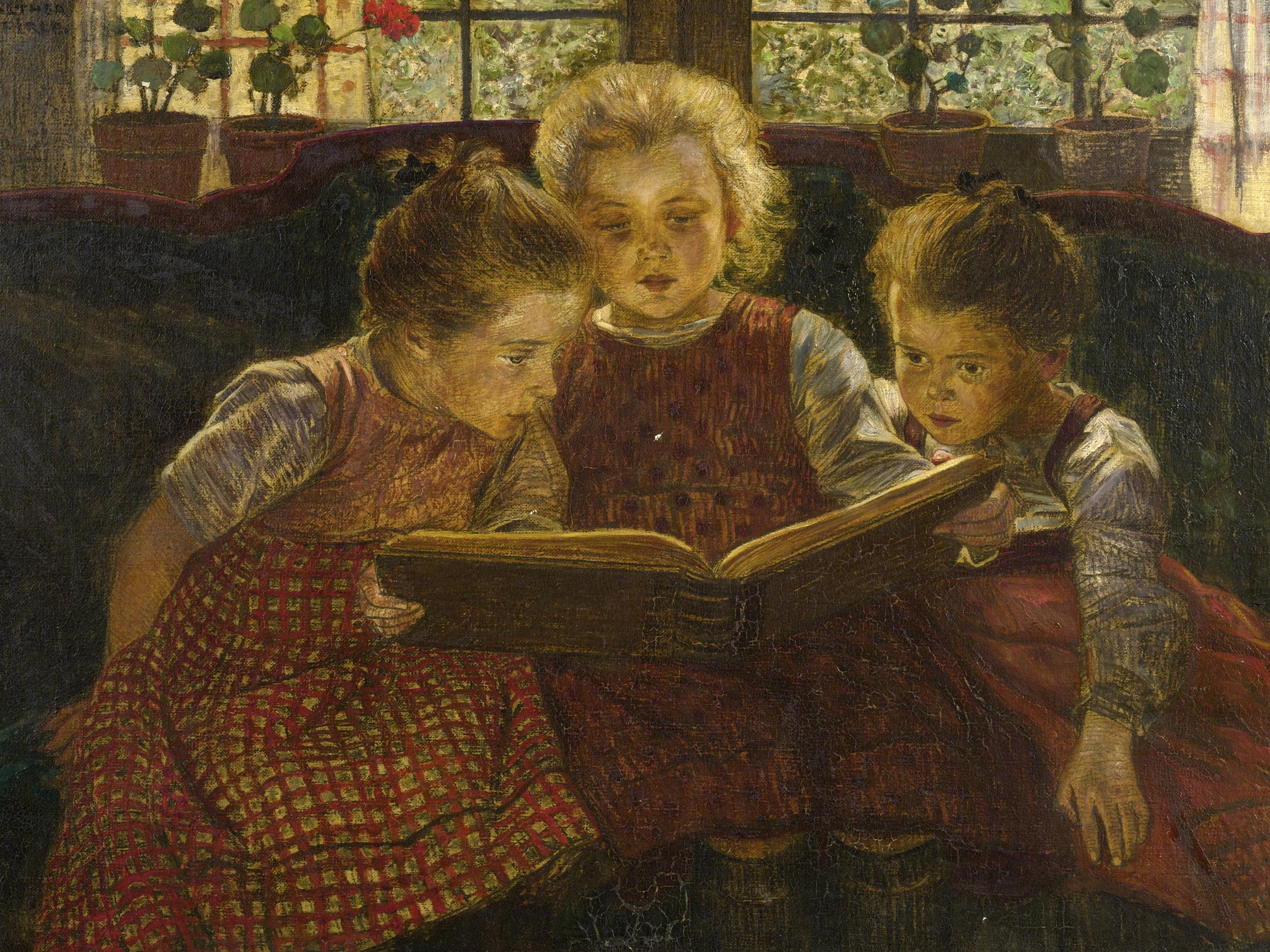Beyond Disney: Why the bloodcurdling fairies of old were to be seriously feared
The creatures of British folklore are not tutu-clad beings, but mischievous bed-hopping folk living in a dangerous parallel world

As Gracie Fields reminds us at this time of year, every little girl would like to be the fairy on the Christmas tree.
Whether it’s the dance of the Sugar Plum Fairy in Tchaikovsky’s ballet The Nutcracker, or the two-winged creatures spreading magic and sparkle in Marks & Spencer’s highly successful viral marketing campaign in 2014, fairies are inextricably entwined with Christmas. It might have been an angel on top of Queen Victoria and Prince Albert’s tree at Windsor Castle in 1841, that kick-started the modern craze for festive foliage in the house, but the tradition of festive fairies goes back further, and to darker times.
On the islands of Shetland and Orkney, they called the fairies “trows” – probably linguistically related to the Scandinavian troll – and they were grey in colour, and lived underground. But seven days before Christmas, or Yule as it was known before the great Christian takeover of the season, the trows would emerge from their subterranean homes for feasting and frolics.
The trows would hold dances every night, and steal food (they were partial to mutton and pork) unless the canny islander had protected it by sticking a knife in it. They also liked a drink, and would raid the beer and liquor from houses dotted about the islands.
Old legends, of course, from a long-gone time. But perhaps not. Consider this tale of a man named Alfred Horne, who was harvesting Christmas trees from the woods near his home in New Hampshire in America. Horne thought he was alone in the darkening forest until he spotted a figure watching him, a curious creature just 2ft tall, with green skin and elephant-like floppy ears. Deciding to capture it as evidence, he made a grab for it but it shrieked with a bloodcurdling scream and startled Horne so much that he made a run for it. This happened at Christmas, of course, December 15 to be exact. But it isn’t a fairy story passed down through generations; this happened as recently as 1956.

Both of those stories are taken from a new book called Magical Folk: British and Irish Fairies, 500AD to the Present. Edited by historian Simon Young and folklore researcher Ceri Houlbrook, this is a quite serious academic treatment of the history of the good folk who have supposedly lived alongside us since time immemorial.
Utilising a battery of experts to offer regional takes on fairy folklore, Young and Houlbrook have assembled a gazetteer of myths, legends and sightings from Cornwall to the furthest northern reaches of Scotland – and beyond, as with the report from New Hampshire in the 1950s.
Their work has been greatly aided by the relative recent phenomenon of old newspapers being digitised, giving them access to snippets, nuggets and curious little stories languishing for decades in the crumbling pages of old periodicals sitting in dusty archives.
Young and Houlbrook say in their introduction: “The digitisation of millions of pages of British and Irish newspapers and magazines means that many local traditions, beliefs and stories can now be reclaimed from hundred- or two-hundred-year-old pages of ephemera. The digitisation of books in Britain and Ireland, particularly books about parishes, villages and towns, means, likewise, it is feasible to find scarce and isolated references to works from the 18th and 19th centuries, when fairies were more commonly sighted.”
But what do we mean by fairies? For the purposes of this book, Young and Houlbrook offer the definition ‘magical, living, resident humanoids’, dwelling exclusively in Britain and Ireland, and some of the lands – for example, America – where British and Irish migrants have settled. This book is not concerned with European fairies, of which there are many and diverse varieties.
What Young and Houlbrook don’t mean are the cute winged creatures popularised by Tinker Bell in Peter Pan, or at least, not the Disneyfied version of such. British fairies, they say, are not “Disney-style tutu-clad magical creatures but blood-sucking, bed-hopping folk living in a dangerous, Tolkienian parallel world”.
If that sounds rather disturbing, it is, as some of the stories show. Cornwall is well-known as a fairy haunt, with its charming-sounding piskies, the knockers who lurk in the tin mines, and the mischievous spriggans. In Ronald M James’s chapter on the county, he recounts local legends that tell of how the sprites could be benign, but easily angered. The knockers in particular were quick to take umbrage. A miner called Tom Trevorrow refused to give the knockers a share of his metal, so they “ruined his luck”. There was more immediate retribution for another miner who spied on the knockers at work; they crippled him.

The rugged lands of Cornwall, Devon and the far north of Scotland are of course fertile ground for fairy legends, but as Young and Houlbrook’s book shows, such folklore has taken root right across the British Isles. And, time and again, the old stories show that the fairies are not to be crossed.
Young, writing the chapter on Cumbria, tells of a miner who was blessed by the fairies and able to find great mineral wealth. Until he shared his good fortune with others, angering the fairies and dying mysteriously not long after. And such stories are not just passed down by the oral tradition. Young quotes a register of deaths from parish records in the village of Lamplugh from the early 18th century, which lists four deaths in five years where the cause given was “frightened to death by fairies”.
Of course, folk tales and superstitions abound across the world, and to our modern sensibilities are obvious attempts to either explain phenomenon which science had not yet found words or explanations for, or to disguise very mortal wrongdoing or mischief making. Fairy tales are things from a less sophisticated age, an unenlightened time.
Perhaps, aside from the fact that during Young and Houlbrook’s investigations they discovered some relatively recent fairy sightings… and the phenomenon continues to hold sway right up to the present day.
The story of the Cottingley Fairies is well known, of course. A century ago, as the world was enmeshed in the Great War, two girls in a West Yorkshire village claimed to have taken photographs of fairies playing by a stream, using one of the girls’ father’s camera. The pictures were shown at a local meeting of the Theosophical Society, got to the attention of Sherlock Holmes author Sir Arthur Conan Doyle, and became a celebrated case, right up until the 1980s when the girls – now old women – admitted to faking the pictures and then not knowing how to get out of their playful hoax as the pictures became a national obsession.
That episode might well have put off anyone who thought they’d seen a fairy from coming forward, but Young and Houlbrook say, “The reluctance to engage with new fairy encounters is slowly changing. In the last few years there have been four surveys of fairy experiences. Such experiences may be difficult to unravel for the modern mind, but they are part of the continuing fairy story and modern fairy sightings, consequently, are woven into this book.”

Like that relayed by Pollyanna Jones in her chapter on Worcestershire fairies. She spoke to two people who were enjoying a pint at a pub near Evesham one summer afternoon in 2006 when they “saw something most unusual”.
She writes: “Gazing through the pub’s small orchard towards the end of the garden they were astonished to witness a small creature, about the size of a human toddler, with gangly limbs, climb over the fence at the bottom of the orchard and disappear into the field beyond. They referred to it as a ‘goblin’. Its skin was nut brown and the creature was quite naked.”
And now you’re thinking, it’s funny how these things always happen to people after a day in the pub, to which Jones replies: “Neither man had drunk more than two pints and both seemed quite sure of what they had seen.”
Young and Houlbrook present the research with neither breathless credulity nor merely as just a retelling of regional folklorish myths. They tread a fine line that is almost scientific; here, they say, is the evidence. It’s up to you what conclusion you draw from it.
The days when every girl wanted to be the fairy on the Christmas tree have faded along with Gracie Fields, and you might, or might not, have one adorning your baubled fir this Christmas. The fairies in this book do not sprinkle stardust and grant wishes, but they have been known to help. Treat them with respect, though, for the tales of those who mock, betray or do wrong by the fairy folk often have bloody and brutal ends.
Join our commenting forum
Join thought-provoking conversations, follow other Independent readers and see their replies
0Comments